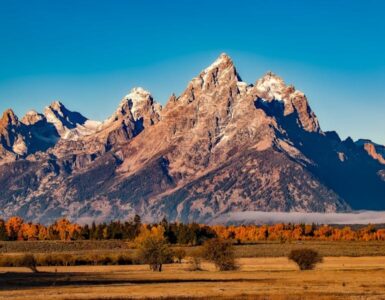The government shutdown, 2019 edition, officially became the country’s longest shutdown in history at the stroke of midnight on Saturday, January 12th. At that point, both sides of the tug-of-war persisted in their respective stances on funding the government, turning the historical standoff into a Shakespearean gun duel — to budge or not to budge. Caught in the middle are government agencies, national parks and federal employees affected in various ways.
According to WalletHub, Arizona is 10th on the financial analyst site’s ranking of the hardest hit parts of the country due to the shutdown. WalletHub pulled five key metrics to make its evaluation that put Arizona in the top 10, including share of federal jobs, federal contract dollars per capita, percentage of families receiving food stamps, real estate as gross state product, and access to national parks.
The hardest hit in the country was, not surprisingly, Washington, D.C., the battleground of the shutdown; New Mexico and Maryland followed closely behind.
“[Arizona] has the tenth highest federal contract dollars per capita, at $2,349.50,” WalletHub’s Jill Gonzalez said. “During the partial shutdown all the contracts funded by the government are put on hold, and the state is impacted as investments are no longer made in things like infrastructure and real estate.”
For the last few years, Arizona has enjoyed a surging real estate sector. That’s complicated now as government agencies involved in securing a mortgage, such as the IRS, the FHA or the VA, are all having staffing issues.
“Real estate also makes up a large share of the state’s GSP, almost 20 percent,” adds Gonzalez.
Tribal nations are also greatly affected by the shutdown. The Navajo Nation, the largest tribal nation within the United States, depends on federal funding for programs such as transportation. The Navajo Nation covers about 25,000 square miles of ground, which means there are wide stretches of road that need maintenance. Without that maintenance, especially during the snowy and wet winter months, traveling has become more difficult than usual, which in turn has made it hard for citizens to get daily items such as groceries or see doctors for medical appointments.
No one knew exactly how the shutdown would affect the country, but Arizona has been caught in the crosshairs. Nine of 15 Cabinet-level departments in Washington, D.C., and dozens more agencies have experienced a lapse in funding, causing a trickle-down effect. The second Friday in January marked the first unpaid payday for more than 420,000 workers, with another 380,000 clocking in as furloughed employees. Of those employees, about 8 in 10 of employees within the National Park Service are staying home.
Grand Canyon National Park, however, has remained open due to a state plan led by Governor Doug Ducey that combines efforts from the NPS, Arizona Office of Tourism and Arizona State Parks to keep the park running. A recent national park service report shows more than 6.2 million people visited the Grand Canyon National Park in 2017 spent $667 million in surrounding communities near the park.
















Add comment